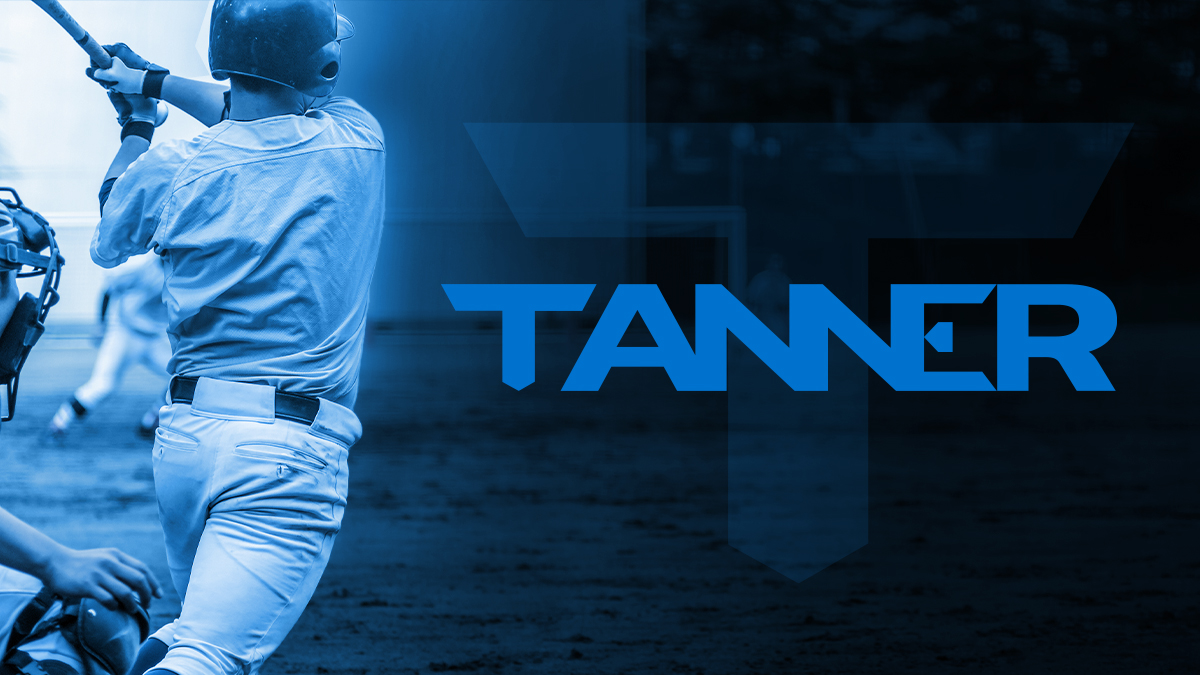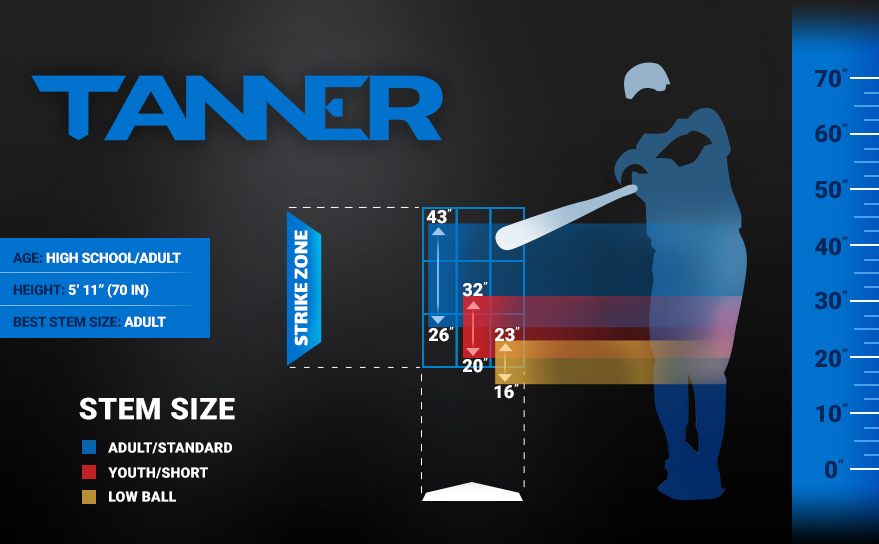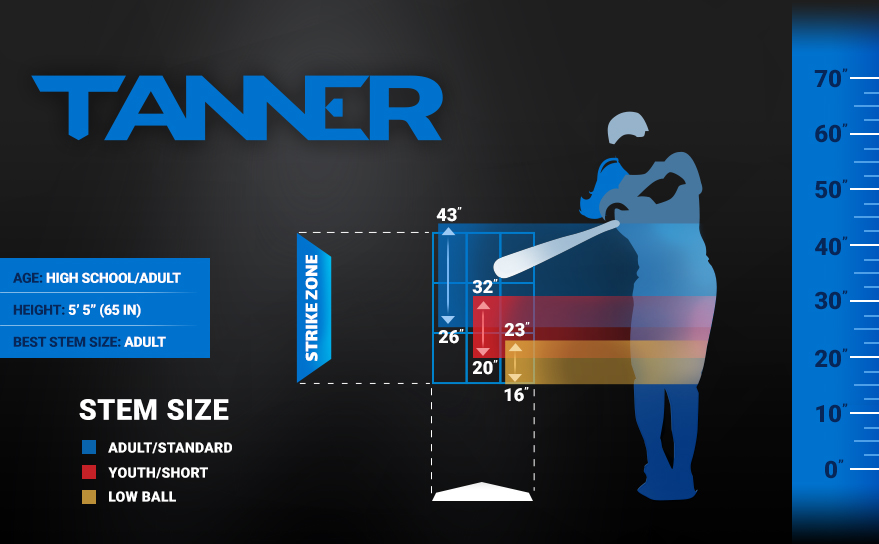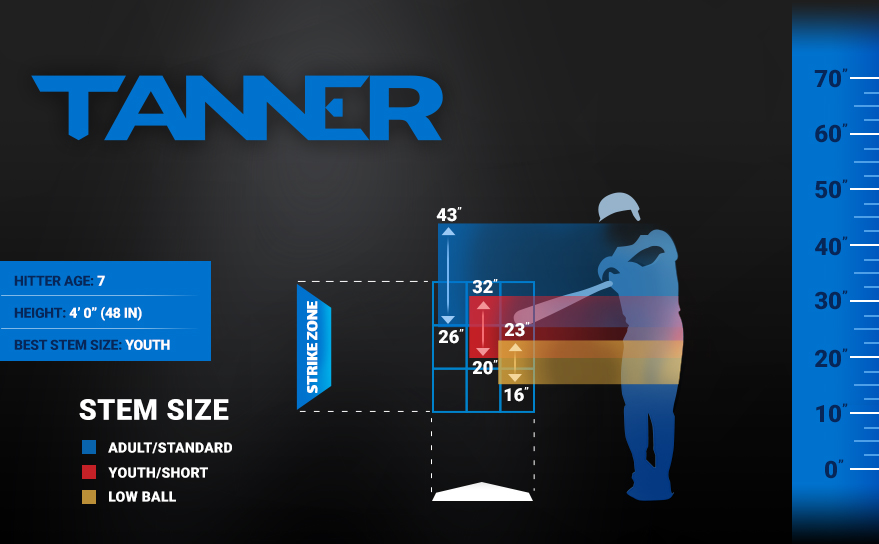Search Articles
What is the Strike Zone

Est. Reading:
4 min
Updated: November 2, 2023
Article Contents
The Strike Zone Explained
In the simplest of terms, the strike zone is an invisible box that extends from the bottom of the knees to a point found between the top of the shoulders and the top of the pants. The ball must pass through this box in order to be called a strike. The exact area of space of the strike zone can vary from batter to batter because of unique stances and from umpire to umpire because they have a very difficult task to pinpoint a moving object's exact location in three dimensions from their reference point behind the catcher.
What is the Width of the Strike Zone
The width of the strike zone extends 17 inches, which is corner to corner on home plate. Pitches thrown inside the 17-inch-wide box and within the range of below knee cap to that point between the top of pants and armpits are generally considered strikes.
The Strike Zone Discrepancy
In reality, there may exist a discrepancy between the book definition of the strike zone and what is called during a game. It's common to see a pitch that crosses one ball off the plate called a strike. It's also common to see umpires call a ball even if the pitch crosses the upper end of the zone within the book definition. Combine strong pitchers with high velocity, crazy spin rates, catchers framing pitches, and even the best-intentioned yet imperfect umpires, and you can see that hitting a baseball or softball is the most difficult skill in sports. Hitter's certainly have a formidable task to hit a moving baseball or softball.
Strike Zone Hitting Practice
Hitters must conduct an array of batting practice drills to mimic the speeds, spin rates, and locations of every pitch. Tee work is one aspect of a complete hitting program that gets results, and Tanner Tees offers three batting tee stem sizes to cover the entire strike zone. Each tee can be moved in and out and adjusted up and down to recreate a specific height and location in the zone.
What is the Strike Zone in Baseball
The graphic below shows which Tanner batting tee would be best for your size hitter. This hitter is 5'11" or 70 inches.
The Low Ball stem in yellow reaches below the knees which is just under the bottom of the strike zone, and the Adult/Standard size tee stem, shown in blue, reaches from mid thy to the upper part of the strike zone. The adult stems cover the most range for an adult male, and this is why we recommend it for ages 9 and above.

Best Batting Tee for Baseball Players
What is the Strike Zone in Softball
A softball hitter with a height of 65 inches (5ft 5in) would find the Adult/Standard Tanner batting tee stem the best batting tee for covering the hitting zone. Our middle size tee stem, called the Youth/Short also offers a wide coverage area, but the most bang for the buck that covers most of her strike zone is also the Adult/Standard stem.

Best Batting Tee for Softball Players
What is the Strike Zone in Little League
Little league players have a smaller strike zone - given their smaller size. The average 7-year-old player with a height of 4 feet (48 inches) and a strike zone between 16 and 32 inches from the ground would be best paired with the Youth/Short tee stem shown in red.

Best Batting Tee for Little League Players
But What About the Low Ball Tee?
As the name suggests, this batting tee stem is for practicing pitches that cross under the strike zone. At 16 inches and with a 7-inch adjustable range, the low ball stem provides a lot of value in working the toughest pitches for high level hitters. Every year we continue to sell this tee to our MLB customers.
It can also work great for the youngest kids just starting out - think three through six years old - as the lower tee stem can prevent from developing bad upward looping swings. However, we know $80-100 is an expensive batting tee for little Johnny or Susie to take his or her first swing, even though it is a proud moment for mom and dad. Stay tuned for some cool developments in our batting tee line up coming soon as we look to bring the youngest hitters into the Tanner community with better priced high quality beginner Tanner batting tee.
To learn more about our low ball stems, visit our batting tees page, select your desired model, and select "Low Ball" from the variations.
Train Hard, Train Often.
At Tanner Tees, our mission is to help you at every step of your baseball or softball journey - pro, facility coach, travel baller, slow pitch warrior. If you are serious about hitting better, hard work and the best hitting tools will help to get you there. The staff at Tanner Tees is always here to answer any questions you might have. Give us a call (800-230-6219) or visit our Facebook and Instagram pages to connect with other members of our community!


